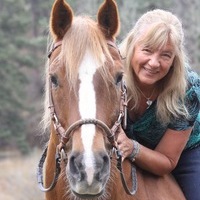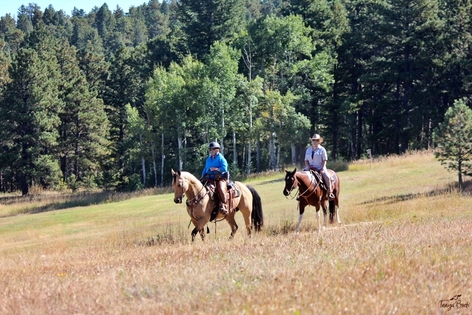
The Most Popular Horse Breeds Of 2019
Equestrian Advice & Guides General Equestrian
Build your business profile for FREE and expose your services to thousands of potential clients!
Create my profile now!
True collection is the highest level of training and is comparable to the horse getting his college degree, yet he’s learning how to carry a rider with each ride, no matter his age. Collection is the last step in training, not the first, and it has nothing to do with head carriage or an arched neck.
So what is collection and how do you achieve it?
When discussing collection, it is helpful to picture a foal, bounding in pasture, “showing off” and holding his frame in perfect frame, his energy happily bundled into into a ball. Collection is roundness. It’s high-octane powerfully focused, and elevated energy. If you imagine the coiling and contraction of muscles so that he is contained and ready for precise motion, you’ll get the idea of how the energy is rounded and used to produce impulsion. With the impulsion being a pushing from coiled muscles, the strides can be long or short, fast or slow. It’s not how fast or slow your gait is, as much as it is about how focused your horse, you and your combined energy are that make the truest collection possible.
To collect a horse is to fine tune him so that it feels like a high-performance race car beneath you. It is the feeling of moving together in sync through feel. It’s the revving of the engine that allows for the collection to occur, almost comparable to a sprinter at the starting block. It’s forward. It’s concise. It’s synchronized and light, more like a ballet dancer than a Formula race car. It is intentional.
When riding a collected horse, it feels like you are sitting on bottled energy, riding a contained explosion, and yet it’s not an explosive at all. Collection, done right, feels like gliding on a smooth, balanced current knowing that your slightest cue will elicit an immediate and willing response from your horse. No wonder it is the top of the training game and desired by so many!
What it means to “collect” a horse—a not-normal way of explaining what it is:
What collecting a horse is not:
How to collect a horse:
How long does it take to teach a horse to collect?
The short answer is that it will take many hours and usually years to teach a horse to collect himself under your direction to achieve a high level of competence. A properly conformed horse will find the job easier than a poorly conformed horse. For example, if his back is too long, he’s built downhill, he’s ewe-necked, or if his shoulders are too steep, he’ll have a much harder time putting himself together than a balanced horse will, and this is why dressage, sport, reining and cutting horses are in the higher price ranges than their trail riding counterparts who may not ever need to collect on a regular bases.
To learn to collect a horse, first ride one that knows how to be collected. A schoolmaster and the right instructor make all the difference here as without learning how to feel and ask for it, the struggle is long and very real. It’s important to have a sound mind and body—both you and your horse—and to take as long as is needed so that rushing doesn’t cause damage to either of you.
As always, contact me directly through my website: www.TanyaBuck.com if you want to chat about riding your horse, Happily Ever After!
~Tanya Buck
FREE Tips here on how to balance both you and your horse, plus you will be signed up for other free goodies all year! https://lp.constantcontactpages.com/su/ou9pQ9C/balancetips

